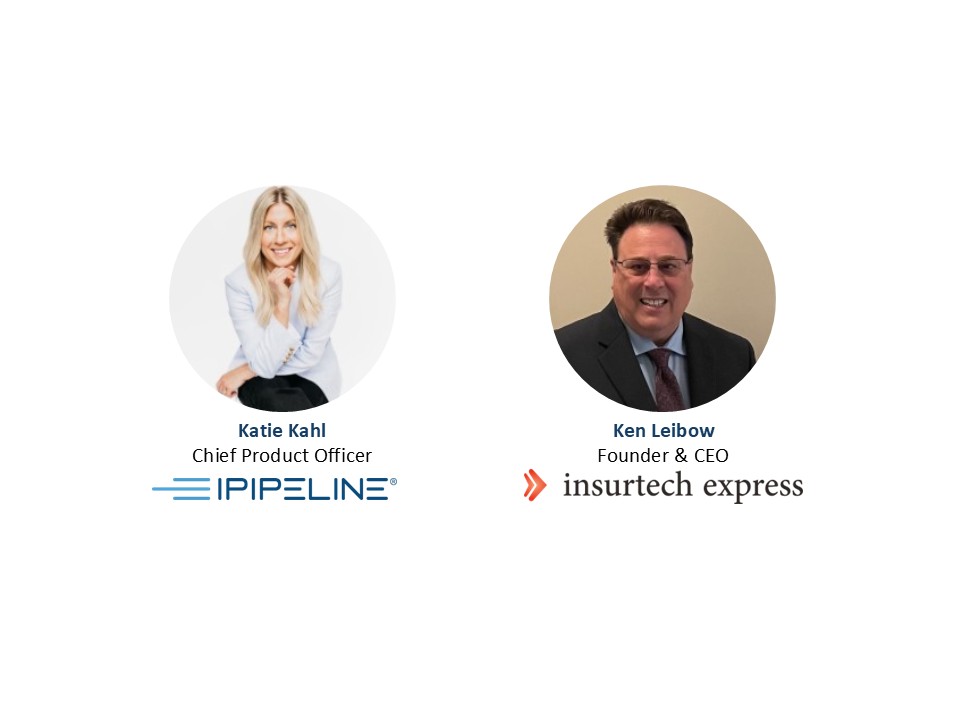
Bridging the Gap: How iPipeline is Using AI and Automation to Transform Life Insurance
The life insurance industry is at a critical juncture. With nearly half of Americans lacking coverage and significant gaps across generational lines, the need for digital transformation has never been more urgent. In this exclusive interview, Ken Leibow, CEO of InsurTech Express, sits down with Katie Kahl, Chief Product Officer at iPipeline, to explore how modern technologies are redefining how carriers and advisors engage with the uninsured.
Ken Leibow: Katie, thank you for joining us today. Let’s start by discussing the current market landscape. What do you believe are the root causes behind the large coverage gap in life insurance, especially among Gen Z and Millennials?
Katie Kahl: I think there are two primary issues. First is the lack of knowledge around what type and how much coverage people actually need. Second is the way these products are marketed and accessed. We need to meet younger generations where they are, and that means adopting a digital-first, dynamic experience that reflects how they engage with other services.
Ken: That’s a great point. How do you see the buying behaviors of younger generations differing from older ones?
Katie: Younger generations expect the same level of personalization and speed they get from platforms like Amazon. But when it comes to life insurance, it’s a complex, infrequent purchase. So the experience needs to be transparent, educational, and digitally driven.
Ken: Let’s dive into technology. What digital tools do you think are game-changers in reaching and educating the uninsured?
Katie: AI is a major player—it can quickly analyze data and provide personalized product recommendations. There’s also a shift in underwriting technology to enable real-time decisions. But none of this works without the right data. So the tech stack must include AI, strong platforms, and clean, connected data.
Ken: What about onboarding and the application experience?
Katie: We’re seeing a shift toward more conversational, dynamic user experiences. With generative AI and co-pilots, we can automate data collection and reduce friction. It’s about gathering less but more meaningful information efficiently.
Ken: That ties directly into a digital-first strategy. What does that look like practically for carriers?
Katie: It means eliminating paper processes and enabling more adaptive, responsive digital workflows. Carriers can use real-time data to personalize offerings and dynamically adjust product recommendations during the sales journey.
Ken: And how can advisors stay relevant in this increasingly digital landscape?
Katie: Advisors will always play a critical role. Technology should empower them, not replace them. AI can handle repetitive tasks, freeing up advisors to provide that much-needed human touch—especially during emotionally significant life events.
Ken: How can AI platforms better educate consumers?
Katie: AI can simplify complex product variables, present side-by-side comparisons, and even offer visual tools or short videos to match different learning preferences. It’s about making education intuitive and accessible.
Ken: Let’s touch on operational infrastructure. What foundational elements do carriers need to get right now?
Katie: Four key areas: strong, clean data; interconnected systems; internal change management to educate their workforce; and a reimagined customer experience. These are essential to scalability and success.
Ken: How does all this help build brand loyalty?
Katie: Even in a digital world, people value personal connection. The key is knowing when to insert that human touch. AI helps you identify those moments—like when a customer is at risk of lapsing—so you can act at the right time.
Ken: Where do you see the biggest growth opportunities in life insurance over the next 3–5 years?
Katie: Product development will be faster, more data-driven, and aligned to real-time market needs. Underwriting will move toward straight-through processing. And marketing will become hyper-targeted, helping match the right people with the right products.
Ken: How is iPipeline evolving to meet these needs?
Katie: We’re investing in internal data infrastructure, AI-powered platforms, and underwriting integrations. Our goal is to bring new products to market quickly and empower advisors with real-time insights and personalized recommendations.
Ken: Katie, this has been a fantastic conversation. Thank you for sharing your insights with us!
Katie: Thank you, Ken. I enjoyed the discussion and appreciate the opportunity.
To learn more, subscribe to our blog at InsurTechExpress.com and check out
